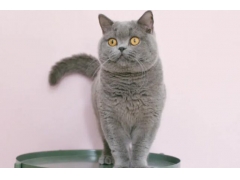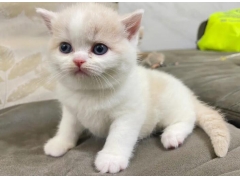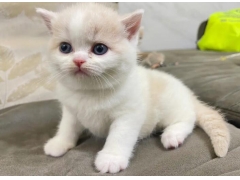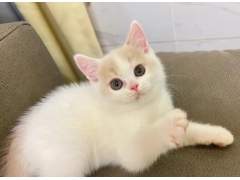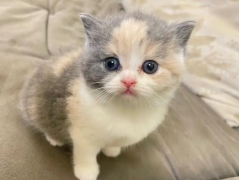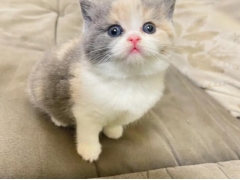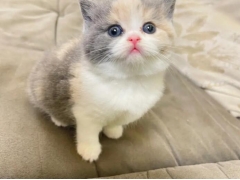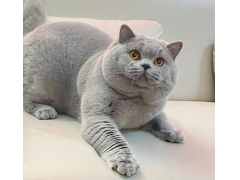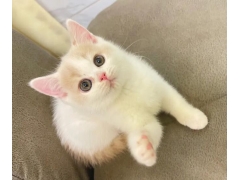英国短毛猫发情特征
英国短毛猫是一种非常受欢迎的猫种,其温和友善的性格和可爱的外貌深受人们喜爱。作为养猫人士,了解并熟悉猫咪的生理周期是非常重要的,尤其是猫咪进入发情期的特征和行为变化。
1. 生理周期
英国短毛猫的发情周期是非常规律的,通常每隔2到3周就会进入一次发情期。发情期通常持续一周左右,但可能会因个体差异而有所不同。
2. 外观变化
当一只英国短毛猫进入发情期时,主人可以通过观察其外观的变化来判断。以下是一些发情期常见的外观变化:
- 1. 排卵期出血:在发情期的排卵期,母猫可能会出现少量阴道出血。
- 2. 更加亲近:发情期的母猫通常会更加亲近主人,主动寻求亲密接触。
- 3. 背部弓起:当母猫被刺激或兴奋时,会将背部弓起,并抬高臀部。
- 4. 尿液喷洒:发情期的母猫可能会用尿液喷洒来标记自己的领地以吸引雄性猫咪。
3. 行为变化
除了外观上的变化,发情期的英国短毛猫在行为上也会有一些明显的变化:
- 1. 持续叫春:发情期的母猫会持续发出呼唤声,以吸引雄性猫咪。
- 2. 摆尾示意:发情期的母猫会抬高尾巴,并常常在尾巴周围摆动,用以吸引雄性猫咪的注意。
- 3. 活跃度增加:发情期的英国短毛猫会更加活跃,经常四处跑动。
- 4. 温顺害羞:发情期的母猫可能会变得温顺,同时也会表现出害羞的行为。
4. 喂养管理
在英国短毛猫发情期间,喂养管理是非常重要的。以下是一些建议:
- 1. 控制饮食:在发情期,猫咪的食欲可能会增加,但仍需控制合理的饮食,以防止体重过度增加。
- 2. 提供安全空间:发情期的母猫可能会变得敏感易怒,提供一个安全的空间,使其感到舒适和安全。
- 3. 家居环境清洁:定期清洁砂盘,保持猫咪的卫生。
- 4. 与兽医咨询:如有需要,及时咨询兽医,了解更多关于发情期的建议和管理方法。
5. 防止繁殖
如果您不打算让英国短毛猫繁殖,那么在发情期间采取必要的防止繁殖措施是非常重要的。以下是一些常用的方法:
- 1. 化学阉割:通过注射荷尔蒙药物来抑制发情的发生。
- 2. 外科手术:通过绝育手术来永久性地阻止猫咪的繁殖能力。
总结
了解英国短毛猫发情期的特征和行为变化对养猫人士来说是非常重要的,这有助于更好地照顾猫咪的需求,并进行合理的喂养管理和防止繁殖措施。如果您有任何疑问或需要进一步的帮助,请及时咨询兽医。
This blog post provides detailed information about the characteristics and behavior changes of British Shorthair cats during their heat cycle (发情期). British Shorthair cats are beloved pets known for their gentle and friendly nature as well as their adorable appearance. As a cat owner, it is crucial to understand and familiarize yourself with the cat's physiological cycle, especially the signs and behavioral changes when the cat enters the heat cycle. The heat cycle of British Shorthair cats is highly regular, typically occurring every 2 to 3 weeks. The heat cycle usually lasts for about a week, although it can vary due to individual differences. When a British Shorthair cat goes into heat, there are visible changes that can help the owner identify this period. Here are some common physical changes during the heat cycle: 1. Ovulation bleeding: During the ovulation phase of the heat cycle, female cats may experience slight vaginal bleeding. 2. Increased affection: Cats in heat tend to seek more affectionate contact with their owners. 3. Raised back and rear: When a female cat is stimulated or excited, she may arch her back and raise her rear. 4. Urine spraying: Female cats in heat may use urine spraying as a way to mark their territory and attract male cats. In addition to physical changes, British Shorthair cats in heat also exhibit noticeable behavioral changes: 1. Persistent vocalization: Female cats in heat continuously emit calling sounds to attract male cats. 2. Tail waving: Cats in heat raise their tails and often wave them around to draw the attention of male cats. 3. Increased activity: Cats in heat become more active and frequently roam around. 4. Gentleness and shyness: Female cats in heat may become more gentle but also display signs of shyness. Proper feeding and management are essential during a British Shorthair cat's heat cycle. Here are some recommendations: 1. Control diet: Although a cat's appetite may increase during the heat cycle, it is crucial to regulate their diet to prevent excessive weight gain. 2. Provide a safe space: Female cats in heat can become sensitive and easily agitated, so it is important to provide a secure space where they feel comfortable and safe. 3. Maintain a clean home environment: Regularly clean the litter box to ensure the cat's hygiene. 4. Consult a veterinarian: If necessary, seek timely advice from a veterinarian to learn more about managing the heat cycle and receive additional recommendations. If you do not intend to breed your British Shorthair cat, taking necessary measures to prevent reproduction during the heat cycle is vital. Here are some commonly used methods: 1. Chemical neutering: Using hormone injections to suppress the occurrence of the cat's heat cycle. 2. Surgical procedure: Opting for spaying surgery to permanently prevent the cat from reproducing. In conclusion, understanding the characteristics and behavioral changes during the heat cycle of British Shorthair cats is essential for cat owners. This knowledge helps provide better care, manage feeding, and prevent unwanted breeding. If you have any questions or need further assistance, it is advisable to consult a veterinarian promptly.顶一下
(0)
0%
踩一下
(0)
0%
- 相关评论
- 我要评论
-
上一篇:英国短毛猫和美国短毛猫哪个好
下一篇:蓝猫和英国短毛猫区别
